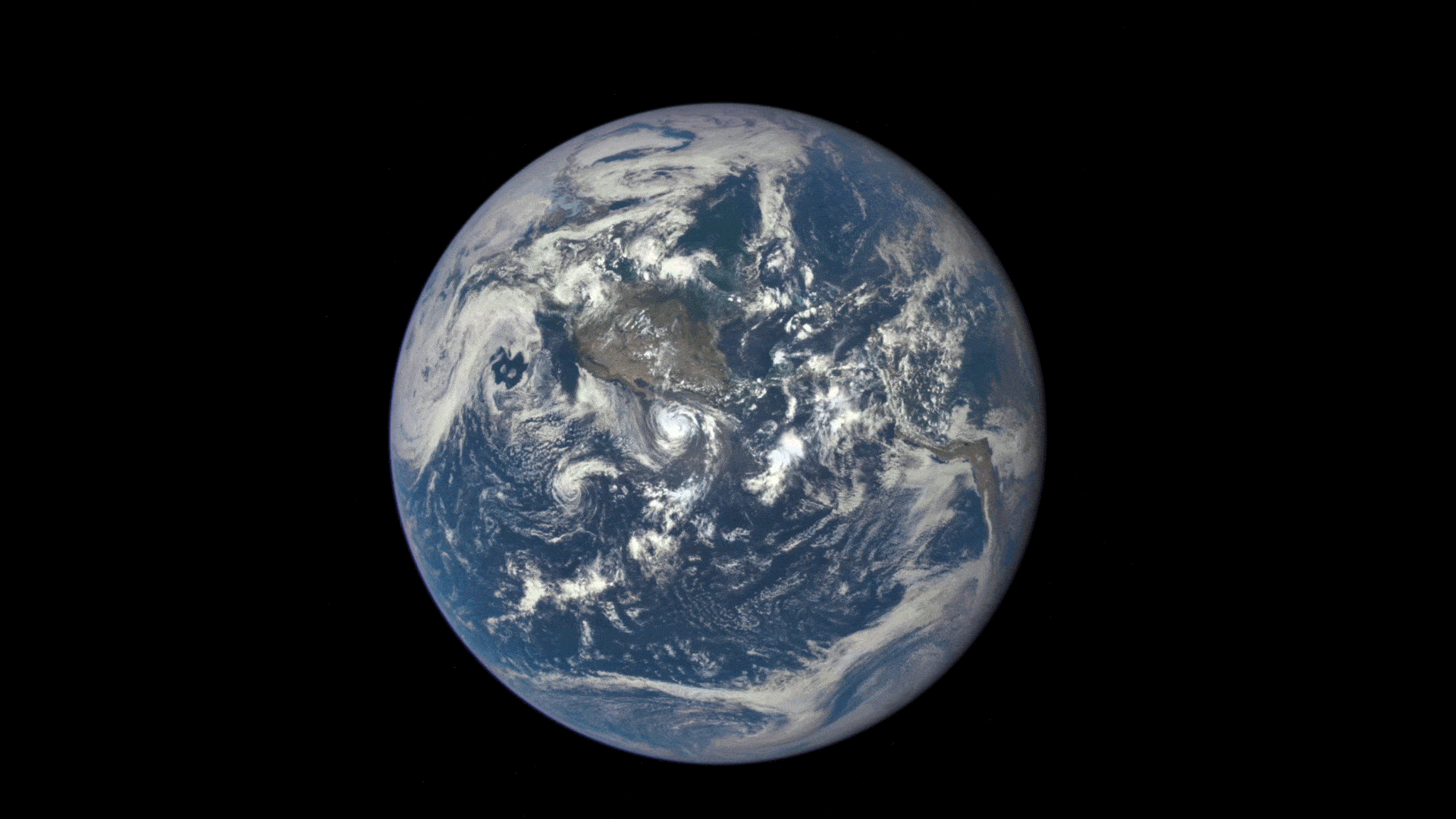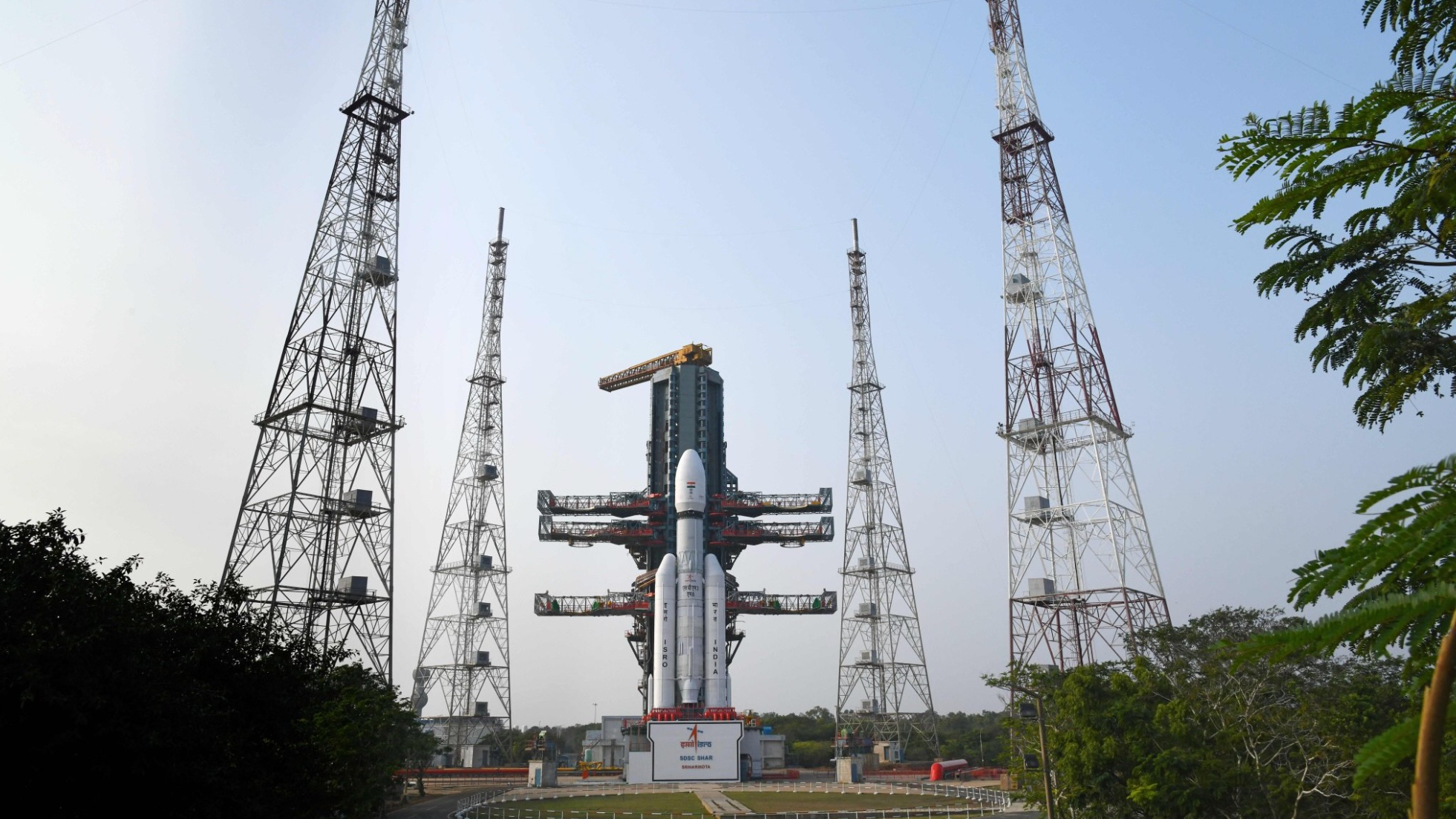Life-enabling moons can probably only form around small planets, study finds
The moon helps Earth keep life going.

Earth's moon is large for the planet's size, and many astronomers have long believed that this fact has helped make Earth a habitable world. And a new study has now found that our planet was just the right size to form such a large, life-enabling moon.
The study, by researchers from the University of Rochester in New York, found that rocky planets with a diameter more than 1.6 times that of Earth and icy planets with a diameter more than 1.3 times that of Earth likely can't create moons that would have those life-enabling effects on them.
Earth's moon has a radius larger than a quarter of Earth's radius. That's a much larger ratio than that of any other moon in our solar system and its host planet. Thanks to its large size compared to the planet, the moon controls the length of Earth's day and governs ocean tides. The moon also stabilizes Earth's axis of rotation, which in turn stabilizes its mild climate, which is favorable for life.
The moon, scientists believe, was born from a cataclysmic collision of a nascent Earth with a Mars-size world known as Theia. This impact stirred up a huge amount of material, part of which turned into vapor in the heat generated by the impact. For some time, this material circled Earth in a disk similar to the ring system of Saturn. The material in this disk, scientists believe, gradually gave rise to smaller moonlets, which subsequently merged to form one large moon.
Related: With all these planets, why haven't we found any exomoons?
So why can't larger planets achieve the same end result? The new study, based on computer modelling, found that if larger planets collide, the energy of the impact is such that all of the ejected material vaporizes rather than part of it. And that makes a difference.
The large amount of vapor around the planet creates drag, which gradually slows down the moonlets as they orbit the planet, making them crash onto its surface, the study found.
Breaking space news, the latest updates on rocket launches, skywatching events and more!
"Our impact simulations show that terrestrial and icy planets that are larger than 1.3−1.6 [the radius of Earth] produce entirely vapor disks, which fail to form a fractionally large moon," the scientists said in the study. "Our model supports the moon-formation models that produce vapor-poor disks and rocky and icy exoplanets whose radii are smaller than 1.6 [the radius of Earth] are ideal candidates for hosting fractionally large exomoons."
The findings might help astronomers fine-tune their search for potentially habitable planets. They simply have to focus on those that can have a large moon compared to their size.
"By understanding moon formations, we have a better constraint on what to look for when searching for Earth-like planets," study lead author Miki Nakajima, an assistant professor of earth and environmental sciences at the University of Rochester, said in a statement. "We expect that exomoons [moons orbiting planets outside our solar system] should be everywhere, but so far we haven't confirmed any. Our constraints will be helpful for future observations."
Nearly 5,000 exoplanets have been discovered since the detection of the first couple in 1992. None of these planets so far has been proven to have a moon,although scientists have found a few candidates.
But Nakajima suggests that the reason for this exomoon absence might be due simply to the size of the planets studied.
"The exoplanet search has typically been focused on planets larger than six Earth masses," she said. "We are proposing that instead we should look at smaller planets because they are probably better candidates to host fractionally large moons."
The study was published on Tuesday (Feb. 1) in the journal Nature Communications.
Follow Tereza Pultarova on Twitter @TerezaPultarova. Follow us on Twitter @Spacedotcom and on Facebook.

Tereza is a London-based science and technology journalist, aspiring fiction writer and amateur gymnast. She worked as a reporter at the Engineering and Technology magazine, freelanced for a range of publications including Live Science, Space.com, Professional Engineering, Via Satellite and Space News and served as a maternity cover science editor at the European Space Agency.
